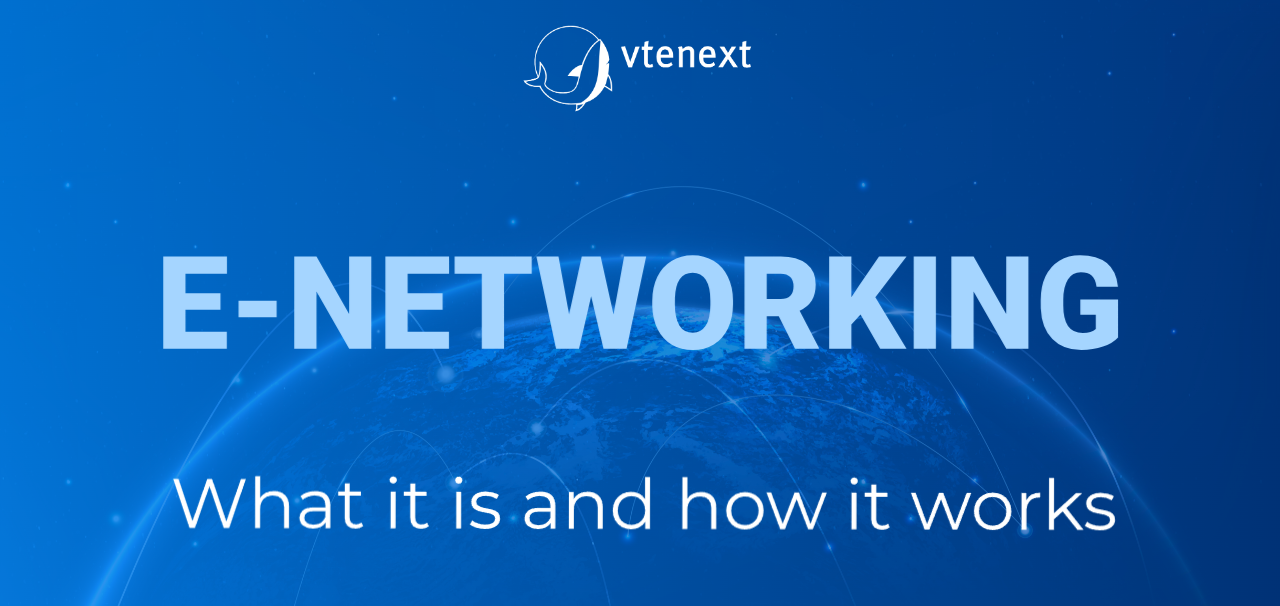Digital transformation has redefined relational dynamics in the professional field as well. Today networking is no longer limited to physical encounters, but extends to virtual spaces where contact occurs quickly, flexibly and potentially globally. E-networking represents this new frontier: a set of practices that leverage digital channels to build strategic connections, overcoming geographical constraints and time constraints. The effectiveness of relationships, today, depends on the ability to move with agility between online and offline and knowing how to manage e-networking can be a significant advantage.
What is e-networking
E-networking is nothing more than the digital evolution of professional relationships: a set of interactions built through online tools and platforms, with the aim of generating shared value, visibility and business opportunities. Unlike traditional networking, based on physical events and direct contacts, e-networking develops in virtual spaces that foster continuity, scalability and access to transversal networks, often difficult to reach offline.
In this sense, approaches and methods need to be rethought: a targeted comment on LinkedIn, an active participation in an industry community or a personalized newsletter can trigger lasting connections, capable of overcoming the formality of the conventional approach. E-networking is founded on content creation, sharing of experiences and building trust within digital professional ecosystems.
Online presence affects reputation as much as – if not more than – physical presence; cultivating a digital network becomes fundamental. E-networking makes it possible to broaden the scope of contacts and intercept new dynamics of collaboration, thus redefining the concept of professional relationship.
How it works
Building professional relationships through digital channels requires a strategy that goes beyond a simple online presence. Every virtual interaction – a comment, a direct message, targeted sharing – can represent the beginning of a lasting relationship, as long as it is set within a context of coherence, value, and continuity. Unlike traditional networking, which favours physical encounters and the immediacy of exchange, e-networking acts on more flexible time frames and on virtual spaces accessible everywhere.
The process often starts from the construction of a credible and well-curated digital identity: up-to-date professional profiles, relevant content and a recognizable tone are elements that foster interest and engagement. From here, a network takes shape, fueled by authentic conversations, timely responses, and shared reflections. It is not just about visibility, but about active presence within relevant digital ecosystems.
The asynchronous aspect of communication makes it possible to overcome barriers of time and space, opening up possibilities for dialogue with global interlocutors and increasing opportunities for connection. Interaction can take place through different channels: professional social networks, virtual events, thematic groups, content sharing platforms.
Follow-up is fundamental: keeping the relationship alive through updates, invitations, suggestions or collaborations. In this sense, e-networking is an ever-evolving relational process, capable of generating both short-term and long-term value.
The benefits of e-networking
Adopting e-networking practices allows businesses to overcome some of the most common limitations of traditional networking. The first advantage concerns the optimization of time: the possibility of starting and maintaining relationships without having to physically participate in events or meetings, enabling more efficient management of resources, particularly useful for professionals with busy schedules or for geographically distributed companies.
A second strategic aspect is the widening of the scope. Digital interactions break down territorial barriers, making it possible to connect with stakeholders in external markets, niche sectors, or international ecosystems. This extension of the network encourages the development of new collaborations, which are difficult to access through conventional channels.
Finally, the psychological dimension must also be considered: e-networking reduces the pressures typical of face-to-face events, offering a more controlled and less exposed context. Communication can be handled with greater awareness, allowing for careful message processing and more precise tone modulation.
How to do it correctly
A clear and recognisable digital identity is the first step to having an effective e-networking strategy. Curated profiles, professional content, and a coherent narrative of one’s professional activities represent the basis for attracting interlocutors in line with one’s skills and ambitions. Each element, from the tone of the communication to the images used, contributes to the perception of authority and reliability.
Interaction must be focused on conversation, not self-promotion. It is advisable to intervene in debates in a relevant way, share original ideas, ask meaningful questions and enhance the contribution of others. This attitude generates an effect of reciprocity, creating a favorable ground for the development of lasting and authentic relationships.
Time management is also essential: constantly planning moments dedicated to digital networking, rather than leaving it to improvisation. Personalized newsletters, follow-up messages, participation in webinars or thematic groups represent valuable opportunities to keep the network active and consolidate existing ties.
It is essential to monitor and evaluate the impact of your e-networking activities. Analyzing the type of relationships developed, the quality of exchanges, and the opportunities generated allows you to adapt your actions over time, making the strategy increasingly focused and effective.
Get help from the right tools
The effectiveness of e-networking largely depends on the choice and conscious use of the digital tools available. Professional platforms represent the privileged environment for activating targeted connections: LinkedIn, in particular, serves as a reference space for dialogues between professionals, publication of industry-specific content and participation in thematic groups.
Along with professional social media, CRMs such as vtenext are playing an increasingly important role and are fundamental tools for managing existing contacts, monitoring interactions and personalizing communication in a structured way. The integration between CRM and digital channels allows you to track the relationship journey, segment the audience and optimize follow-up actions, transforming every connection into a potential opportunity.
The ecosystem is rounded out by platforms for virtual events (such as Zoom, Google Meet or Hopin) and digital communities on Slack or Discord, dynamic environments that encourage continuous exchange.

